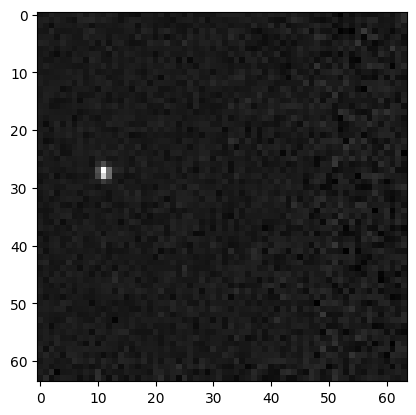Shift and Stack Visualization#
This notebook demonstrates the basic concepts behind a shift and stack algorithm. It loads image data from files, shifts them according to a given velocity, and displays the stacked image.
Setup for shift and stack#
Before importing, make sure you have installed kbmod using pip install . in the root directory. Also be sure you are running with python3 and using the correct notebook kernel.
[1]:
# everything we will need for this demo
import kbmod.search as kb
import matplotlib.pyplot as plt
import math
import os
Loading data for shift and stack#
We load the data as a stack of images from a directory. You can use any data you like, but replacing the line that computes files in the code below:
[2]:
p = kb.psf(1.0)
im_path = "../data/small/"
files = [im_path + f for f in os.listdir(im_path) if ".fits" in f]
files.sort()
# Create default PSFs for each image.
all_psfs = [p for _ in range(len(files))]
# Load the images.
stack = kb.image_stack(files, all_psfs)
num_images = stack.img_count()
print(f"Loaded {num_images} images.")
.Loaded 10 images.
.........
We display each image individually:
[3]:
w = 4
h = math.ceil(num_images / w)
fig, axs = plt.subplots(h, w)
for i in range(h):
for j in range(w):
ind = w * i + j
if ind < num_images:
axs[i, j].imshow(stack.get_single_image(ind).get_science(), cmap="gray")

Shift and Stack#
The most basic form of shift and stack takes two parameters: pixel space velocities along the x and y dimensions. The demo data in “../data/small” has a fake object with x_v = 16.0 and y_v = 3.3, but you can try any value you want.
[4]:
x_v = 16.0
y_v = 3.3
combined = stack.simple_shift_and_stack(x_v, y_v, True)
plt.imshow(combined, cmap="gray")
[4]:
<matplotlib.image.AxesImage at 0x7fda1d631310>

[ ]: